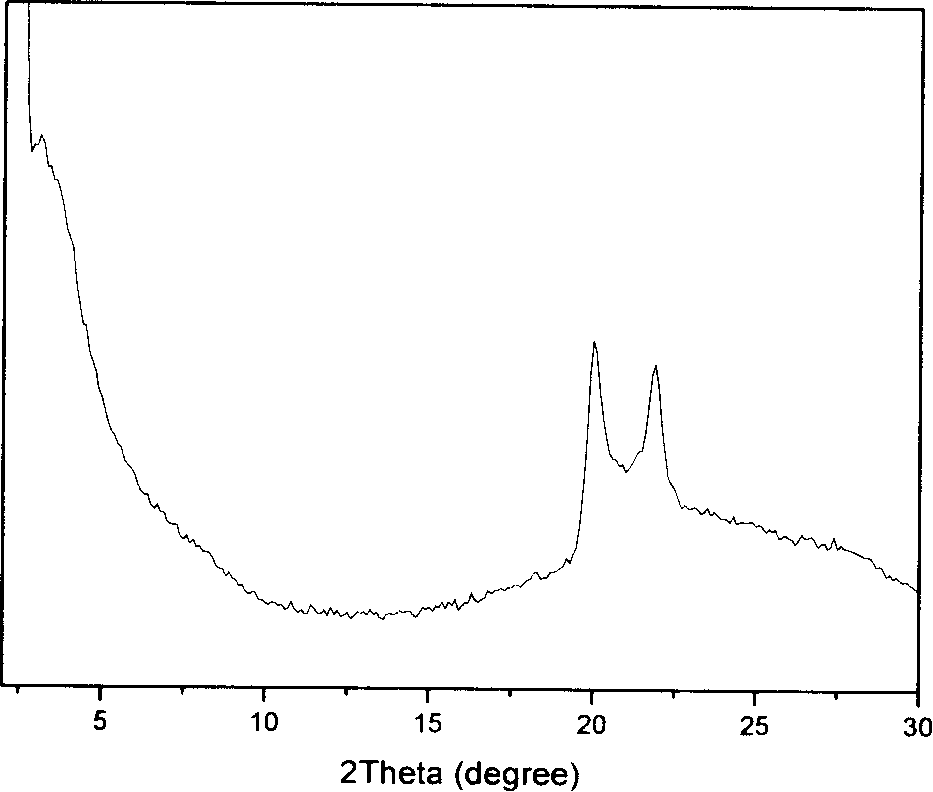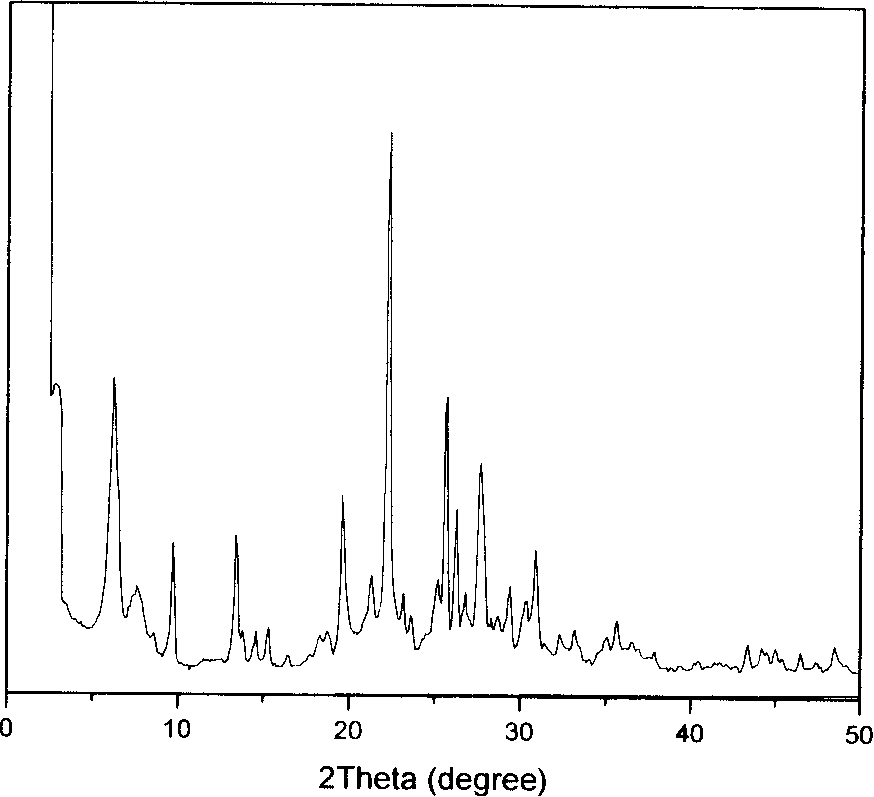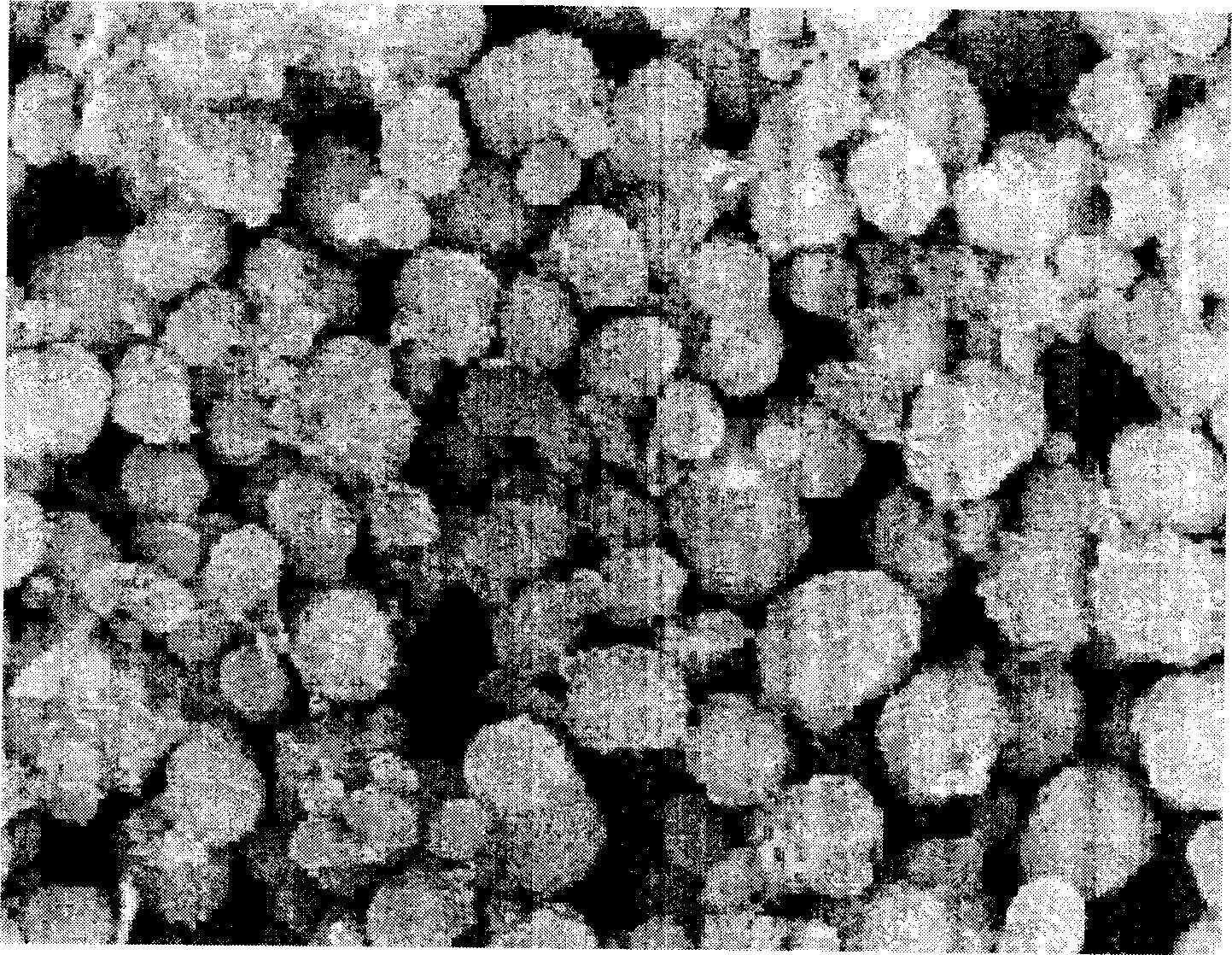Mesoporous material/micropore molecular sieve composite material and preparation method thereof
A technology of microporous molecular sieve and mesoporous material, applied in the field of mesoporous material/microporous molecular sieve composite material and its preparation, can solve the problem of mechanical stability, poor thermal and hydrothermal stability, no repeating unit cell structural unit, mesoporous Molecular sieve still needs time and other problems to achieve the effect of good stability, improved hydrothermal stability and strong acidity
- Summary
- Abstract
- Description
- Claims
- Application Information
AI Technical Summary
Problems solved by technology
Method used
Image
Examples
preparation example Construction
[0027] (1) Preparation of PCHs
[0028] Firstly, acid clay or organoclay is prepared, which can be obtained by modifying layered clay, and the modification methods mentioned are common techniques in the art.
[0029] The acid modification method is as follows: layered clay, ammonium salt (or acid) and deionized water are made into a slurry at a weight ratio of 1: (0.1-0.6): (5-20), and stirred at room temperature to 95°C 0.5 to 24 hours, separated, washed, and dried at room temperature to 150°C. Among them, ammonium salts include NH 4 Cl, NH 4 NO 3 and (NH 4 ) 2 SO 4 etc. Acids include hydrochloric acid, sulfuric acid and nitric acid, etc.; if ammonium salt is added, it needs to be roasted at 300-700°C for 1-5 hours.
[0030] The organic modification method is as follows: layered clay, quaternary ammonium salt and deionized water are made into a slurry at a weight ratio of 1: (0.1-0.6): (5-20), and stirred at room temperature to 95°C for 0.5- After 24 hours, separate, ...
Embodiment 1
[0042] This embodiment prepares organic montmorillonite:
[0043] (1) Flotation: Take 40g of natural calcium-based montmorillonite, add 360mL of deionized water, stir at room temperature for 5 hours, settle for 2 hours, take the upper liquid, add flocculant, separate the refined calcium-based montmorillonite, Dry at 110°C for 24 hours.
[0044] (2) Sodiumization: Weigh 20g of refined calcium-based montmorillonite after flotation, add 800mL of deionized water to make a slurry, then add 8g of NaCl, stir mechanically at 60°C for 4 hours, and separate the sodium-based montmorillonite Soil, dry at room temperature to 150°C for 24 hours.
[0045] (3) Organic modification: take 10g of sodium montmorillonite, add 400mL of deionized water, add 4g of cetyltrimethylammonium bromide, stir at 60°C for 5 hours, separate, and then wash until the filtrate is free of Cl - Until (tested with silver nitrate), dry at room temperature to 150°C for 24 hours to obtain organic montmorillonite.
Embodiment 2
[0047] The present embodiment prepares acid montmorillonite:
[0048] Get 10g of refined calcium-based montmorillonite floated by step (1) in Example 1, add 400mL of deionized water, add 5mL of hydrochloric acid with a concentration of 36% (mass fraction), stir at room temperature for 5 hours, and separate the solid and liquid , and then washed until the filtrate was free of Cl - Until (tested with silver nitrate), dry at room temperature to 150°C for 24 hours to obtain acidic montmorillonite.
PUM
| Property | Measurement | Unit |
|---|---|---|
| Aperture | aaaaa | aaaaa |
Abstract
Description
Claims
Application Information
 Login to View More
Login to View More - R&D
- Intellectual Property
- Life Sciences
- Materials
- Tech Scout
- Unparalleled Data Quality
- Higher Quality Content
- 60% Fewer Hallucinations
Browse by: Latest US Patents, China's latest patents, Technical Efficacy Thesaurus, Application Domain, Technology Topic, Popular Technical Reports.
© 2025 PatSnap. All rights reserved.Legal|Privacy policy|Modern Slavery Act Transparency Statement|Sitemap|About US| Contact US: help@patsnap.com



